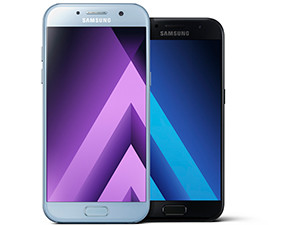
Samsung's Galaxy A series smartphones are a line-up of upper mid-range devices running on Android. They are quite similar to the more expensive, high-end Galaxy S models but offer lower specifications and features. As a result, Samsung can lower their prices.
These new 2017 editions include improvements directly taken from the Galaxy S7 smartphone, like IP68-rating water and dust resistance, a comparable design, an improved screen, new cameras and next-generation energy-efficient processing hardware.
Design: clean and fresh
From the look and feel, it's obvious that the Galaxy A series phones get their inspiration from the Galaxy S line-up. Because of the curved glass on the front of the A3 and A5, as well as the curvy backside and the thin metal strip in between, they are clearly related to the high-end S7 models.
The black review model I tested has a very clean and fresh look. Although the actual design of both the A3 and A5 isn't particularly eye-catching, it feels adequately solid and durable, mainly due to the good choice of materials.
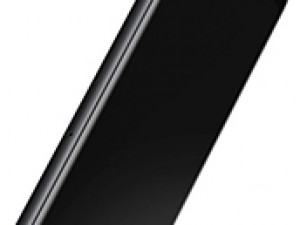
The glass finish on the backside does come with some disadvantages, though. Not only is it an accumulator of greasy fingerprints, it also easily shows signs of wear and tear. Even though both devices are manufactured with chemically hardened glass, it will shatter when dropped on a hard surface. Therefore, getting a protective cover with the A3 or A5 is highly advisable.
Size-wise, the Galaxy A3 is relatively small. Only the Apple iPhone SE is more compact. Another Android-based alternative is Sony's 4.6-inch Xperia X Compact. The A5 has a considerably bigger screen, but because of the device's minimalistic bezels, still offers comfortable dimensions.
Device | A3 2017 | A5 2017 | Galaxy S7 | iPhone 7 | iPhone SE |
Dimensions | 135 x 66 x | 146 x 71 x | 142 x 70 x | 138 x 67 x 7.1mm | 124 x 58 x |
Screen size | 4.7-inch | 5.2-inch | 5.1-inch | 4.7-inch | 4.0-inch |
Weight | 135g | 157g | 152g | 138g | 113g |
These A3 and A5 are the first Galaxy A series phones that are IP68 certified, meaning they won't stop working when confronted with moisture like rain and sweat, or sand and dust. Good to see that this important feature is now included in Samsung's mid-range devices, instead of just the expensive high-end models.
Fingerprint sensor
Compared to the 2015 models of the Galaxy A3 and A5, the hardware that scans your fingerprint to grant access has been replaced by a newer version. Both phones are equipped with a sensor from EgisTec, the company that also manufactured similar hardware for some previous Samsung Galaxy devices.
In practice, the fingerprint sensor does a sufficient job but doesn't excel either. It is slightly slower than that of other midrange smartphones - which is not the end of the world. But it's a shame the sensor only work with completely dry fingers while most other sensors have no trouble with a bit of moisture.
Both the A3 and A5 feature an excellent Samsung-produced OLED-screen. The fact that Samsung chose this particular display technology is no surprise - they have done so for years and are expected to continue with that tradition.
Screen | Galaxy A3 | Galaxy A5 |
Diagonal | 4.7-inch | 5.2-inch |
Resolution | 1280x720 | 1920x1080 |
Pixels per inch | 312 | 423 |
The Galaxy A3's screen is not only smaller but it's also less sharp and crispy looking that the A5's. In addition, the A3 houses a "Diamond Pixels" variant on the typical OLED-screen. This means that a green subpixel is managed by two separate pixels, which results in a lower grade of sharpness compared to other RGB-screens.
Nonetheless, anyone who isn't exceptionally keen on very sharp-looking content won't be bothered with A3's screen after a while. It is, after all, the price you pay for a more affordable phone. The Galaxy A5, on the other hand, is easily capable of displaying significantly sharper and detailed overall image quality.
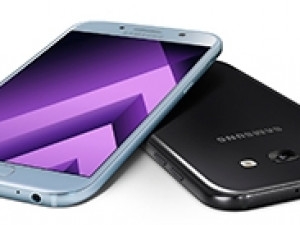
Measured maximum brightness levels of the A3 (530 cd/m2) and A5 (560 cd/m2) are quite good, but not on par with the Galaxy S7 (655 cd/m2) or iPhone SE (605 cd/m2).
Since the screen of the A3 and A5 doesn't show a lot of pesky reflections, both devices are very comfortable to work with in direct sunlight or straight underneath bright office lights.
Enterprise security platform
Samsung pre-installed the A3 and A5 with an integrated mobile security platform called KNOX. Amongst others, it enables users to separate corporate from personal apps and data. In turn, this allows IT administrators to set security policies and manage enterprise data remotely while allowing device owners to keep their personal life private.
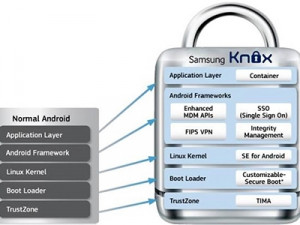
KNOX also aims to protect the integrity of the entire device, from the hardware to the application layer, with a multi-level approach to security that includes Trusted Boot and TrustZone-based Integrity Measurement Architecture (TIMA).
Samsung's security platform is compatible with a wide range of Mobile Device Management (MDM) providers. As a result, it should be fairly easy to integrate them into an existing infrastructure. KNOX also facilitates efficient pushing of specific corporate security policies through the MDM console to employee-owned devices.
Camera: room for improvement
Between the A3 and A5, one of the most noticeable differentiators are the front and rear cameras. Although they are located in the same spot, they are technically far from identical.
Camera | A3 - rear | A3 - front | A5 - rear | A5 - front |
Sensor | Sony IMX 258 | Sony IMX219 | Samsung S5K3P8 | Samsung S5K3P8 |
Resolution | 13-megapixel | 8-megapixel | 16-megapixel | 16-megapixel |
Sensor size | 1/3,06" | 1/4" | Approx. 1/3" | Approx. 1/3" |
Pixels | 1,12um | 1,12um | 1,0um | 1,0um |
Lens | f/1.9 | f/1.9 | f/1.9 | f/1.9 |
Flash | Single LED | Screen | Single LED | Screen |
Focus | Contrast-af | Fixed focus | Contrast-af | Fixed focus |
Stabilisation | No | No | No | No |
Although the A3's rear camera is relatively sensitive to light, its front camera features an unimpressive 1/4" 8MP sensor. The A5 houses two cameras that work with identical 16MP sensors, which in the case of the front camera is impressive. For the rear camera, it is not.
Having identical sensors might imply that you can get the exact same image quality, which unfortunately isn't the case. The A5's front camera is unable to dynamically adjust its focal point. Getting relatively distant objects sharp is a real challenge. This is also the case with the A3. Anybody with relatively long arms needs to keep the camera unnaturally close for it to get a good facial focus.
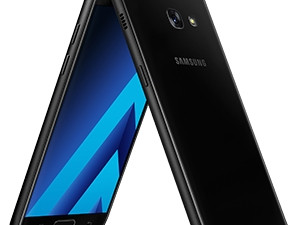
The camera interface is in line with what you would come to expect from Samsung and does a good job. The shutter button for photos and the record button for video are both shown simultaneously on screen making it easy to quickly capture footage. On top of that, the camera app features seven operating modes of which more can be downloaded. There are also numerous filters available to spice up images.
For those who want more freedom in tweaking certain settings, both the A3 and A5 have a Pro-mode. This facilitates accurately setting variables like ISO levels, white balance, exposure etc. Unfortunately, the default camera app is unable to store images in RAW-format.
Both the front and rear cameras on the A3 and A5 are responsive and snappy. Even if the phone's screen is turned off, double tapping the home button quickly launches the camera app - a feature one quickly gets accustomed to since it works so well.
Low-light scenarios, a notorious and problematic situation for most smartphones, pose a real challenge for the A3 and A5. Both devices have enormous trouble autofocusing when there's no ample light source available. As a result, they need considerably more time to get it right, if they ever do.
Like most cameras in the mid-segment price range they perform well enough when there is an abundance of light, but capture quality quickly drops when darkness sets in. The fact that both devices lack Optical Image Stabilisation, which the Galaxy S7 does have, doesn't help either.
Hardware: 14nm at work
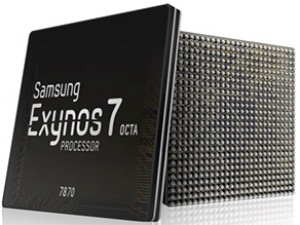
Both the A3 and A5 run on an octa-core Samsung Exynos chip. The A3 uses a slightly slower CPU, GPU and RAM than the A5. On the other hand, it also has fewer pixels to manage.
It's great to see that Samsung finally uses its 14nm process for manufacturing these chips. This should imply, at least in theory, they are more energy efficient than 20nm or 28nm variants.
Hardware | Galaxy A3 2017 | Galaxy A5 2017 |
Chip | ||
Process | Samsung 14nm-FinFet | Samsung 14nm-FinFet |
CPU | 8x Cortex A53 @ 1,6GHz | 8x Cortex A53 @ 1,9GHz |
GPU | Mali T830 | Mali T830MP3 |
Memory | Lpddr3, 933MHz | Lpddr4, 1033MHz |
Both models support Wi-Fi 802.11 a/b/g/n/ac, NFC and Bluetooth 4.2. In addition, they also feature a modern USB-C connector. It's good to see Samsung decided to include a small micro-USB adapter so you can still use regular USB cables and accessories.
The Galaxy A3 has 2GB of on-board RAM and offers only 16GB of storage space. The A5 works with 3GB RAM and features a more spacious 32GB storage. Luckily, there's always the option to further expand storage space up to 256GB by using the micro SD-slot.
The A3 and A5, even though fitted with a modern USB-C port, still feature a traditional 3.5mm audio jack. The sound it produces isn't exceptionally good, but just the fact that it is still there, is a plus for most. The integrated speaker is wisely located on the right side, but can only output in mono and doesn't excel in sound quality either. Even in this middle price segment, most phones can output slightly higher quality and volume.
Performance: unimpressive, yet sufficient
To find out how the new A3 and A5 stacked up to higher-end models, similarly sized and priced devices, as well as their 2015 predecessors, I ran two separate benchmarks.
The Geekbench 4 cross-platform multi-core test, which simulates real-world tasks and applications primarily stressing the CPU, showed that the 2017 models of the A3 and A5 easily outperform the 2015 models, which shouldn't come as a total surprise. They are, however, unable to beat the Apple iPhone SE and Huawei Nova. Not to speak of the included high-end models.
Additionally, the 3DMark Ice Storm Unlimited benchmark, which puts more focus on the graphical (GPU) performance, revealed similar results. The new A3 and A5 are significantly faster than their 2015 counterparts, but unable to match most of the other devices, let alone the more expensive premium models.
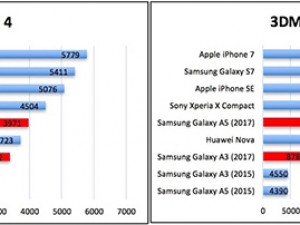
In the end, although they use state of the art 14nm chips, both the A3 and A5 remain mediocre performers with the A3 being the less powerful of the two. They do, however, pack enough punch for comfortable and snappy browsing, messaging, e-mailing, consuming music, watching YouTube fragments and handling office documents. For playing the latest 3D-games during a lunch break, the A3 and A5 are a bad choice.
Battery life: exemplary
Samsung's A3 phone is fitted with a 2350mAh capacity battery while the A5 is powered by a slightly bigger 3000mAh version. Neither one is unusually big or small. Both support quick charging technology, but only the A5 comes with the actual quick-charging unit straight out of the box. Included with the A3, there's a 7,7W charger while the A5 is shipped with a 15W version.
How those numbers translate into in real-life operating time, was determined by running two benchmarks while keeping screen brightness of all devices identical to keep comparison fair and square.
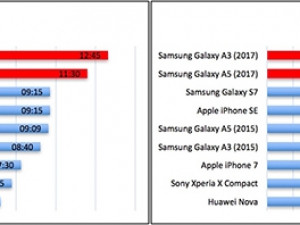
The browser test, which follows a script that continuously keeps the devices browsing, and scrolling through, various websites until there is no more power left, showed some very promising results. The A3 lasted an excellent twelve hours and 45 minutes while the A5 endured for eleven hours and 30 minutes. With that score, they have no trouble surpassing all the other devices included in this review, even expensive high-end models. When used for light office task, and taking some idle time into account, you might even be able to squeeze out two days without having to hook them up to an energy source in the process.
The video test, which stresses the A3 and A5 with displaying non-stop, Full-HD content until all energy is depleted, showed the same outstanding results. Both devices last for more than 18 hours, even beating the Galaxy S7 and Apple devices.
These excellent results can be explained by the combination of state-of-the-art energy efficient, however unexceptionally fast, internal hardware and OLED screen technology.
On top of that, both devices are completely charged after just two hours' time, from a 3% starting point. They'll also show an increase in battery charge of at least 30% in just under half an hour.
Final verdict
Are the A3 and A5 a hit or a miss? That all depends on what you're looking for in a new phone. If you are searching for a powerful device with a great camera, these are not for you.
But if you'd like to avoid breaking the bank and still acquire a well-designed, water- and dust-resistant, versatile phone with great battery life, you will find either of these new Galaxy devices to be an ideal choice.
In Summary | Samsung Galaxy A3 and A5 2017 |
Rating | 7/10 (A3), 7.5/10 (A5) |
Pros | Exemplary battery life, KNOX security platform, water and dust resistant, |
Cons | Lacks horsepower, disappointing cameras, 16GB (A3) |
Price | R5 999 (A3), R7 499 (A5) |
Availability | Now |
Product page |
Share